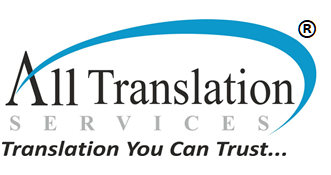AI vs. Human Translators: Where Do We Stand Today?
The Rise of AI in Translation
AI-powered translation tools have come a long way from their rudimentary beginnings. Leveraging machine learning, neural networks, and vast linguistic databases, these tools can process millions of words in seconds. They offer several advantages, including:
- Speed: AI can translate text almost instantaneously, making it an appealing option for urgent tasks.
- Cost Efficiency: Many AI translation tools are free or available at a low subscription cost, making them accessible to a wide audience.
- Convenience: Built-in translation features in apps and devices make on-the-go translation effortless.
These benefits have led to increased reliance on AI, especially for casual or non-critical translations. But despite these advancements, AI translation tools come with significant limitations.
The Limitations of AI Translation
While AI excels in speed and scalability, it often struggles to match the nuance, context, and cultural sensitivity required for accurate translations. Here are some critical areas where AI falls short:
- Lack of Contextual Understanding: AI relies on algorithms and databases rather than genuine understanding. As a result, it often misinterprets context, leading to awkward or incorrect translations. For instance, idiomatic expressions and humor are notoriously difficult for AI to handle.
- Cultural Sensitivity: Language is deeply intertwined with culture. Human translators understand cultural nuances, local customs, and traditions, ensuring translations are appropriate and resonate with the target audience. AI lacks this cultural awareness.
- Inaccuracy in Specialized Fields: Industries such as medicine, law, and technology require precise terminology. A mistranslation in these fields can have serious consequences. Human translators with expertise in these domains ensure accuracy and reliability, something AI struggles to achieve consistently.
- Emotional Connection: Translation is not just about converting words but also about conveying emotions and tone. Human translators bring empathy and creativity to their work, crafting messages that engage and connect with the target audience. AI lacks the ability to replicate these human qualities.
The Case for Human Translation
Human translation continues to be the gold standard for high-quality, accurate, and culturally relevant translations. Here’s why:
- Expertise and Specialization: Professional translators often specialize in specific industries, ensuring they understand the terminology, context, and requirements of the field. Their expertise ensures accurate and reliable translations that AI cannot guarantee.
- Cultural Adaptation: A skilled translator doesn’t just translate words; they adapt the content to align with the cultural norms and expectations of the target audience. This is especially important for marketing, legal, and literary translations.
- Quality Assurance: Human translators review and refine their work to ensure it is free from errors. They understand the importance of consistency and accuracy, especially in critical documents.
- Ethical Considerations: Human translators adhere to ethical standards, such as maintaining confidentiality and avoiding bias. AI tools, on the other hand, raise concerns about data privacy and the potential misuse of sensitive information.
- Flexibility and Creativity: Language is constantly evolving, and human translators can adapt to new slang, idioms, and cultural shifts. They also bring creativity to their translations, ensuring the final output is engaging and impactful.
When to Choose AI vs. Human Translation
While human translation is indispensable for many tasks, AI can be a useful supplement in certain scenarios. Here’s a quick comparison:
| Use AI Translation | Choose Human Translation |
| Quick translations for casual use (e.g., travel phrases) | Critical documents such as contracts, medical reports, and legal texts |
| Understanding the gist of foreign content | Marketing materials that require cultural adaptation |
| Low-stakes communication (e.g., emails) | Literary works, including books and poetry |
The Future: Collaboration, Not Competition
Rather than viewing AI as a competitor, the future of translation lies in collaboration between AI and human translators. AI can handle repetitive and basic tasks, allowing human translators to focus on high-value, complex projects. This synergy enhances efficiency while maintaining the quality and creativity only humans can provide.
Conclusion
While AI has made impressive strides in translation technology, it is far from replacing the expertise, creativity, and cultural sensitivity of human translators. For businesses and individuals who value accuracy, quality, and meaningful communication, professional human translation services remains the clear choice. As we move forward, leveraging the strengths of both AI and human translators will pave the way for a more connected and linguistically inclusive world.
